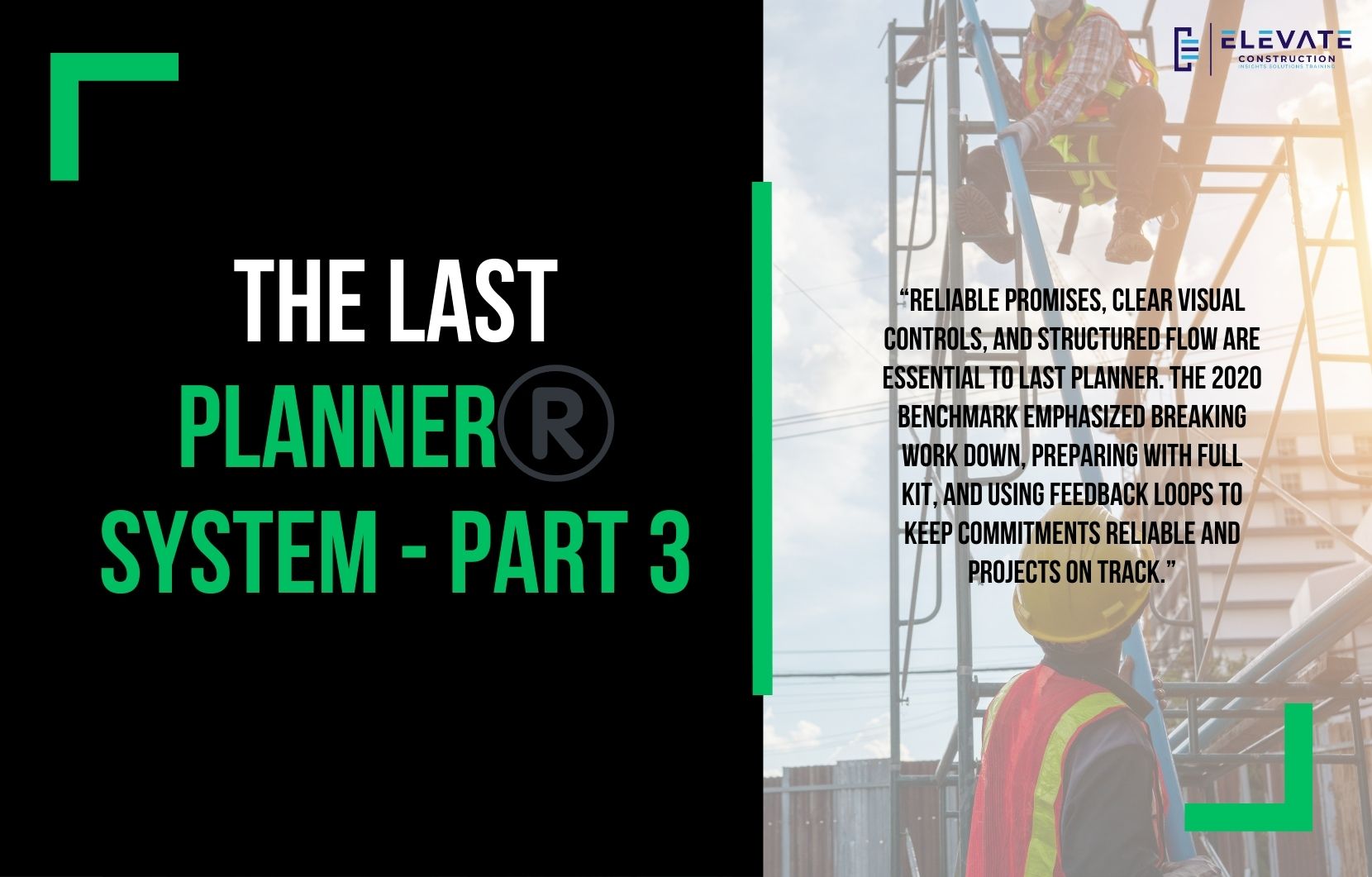The Last Planner System is evolving, and part of that process includes reviewing benchmark documents. In 2020, a benchmark was released that provided updates and recommendations for how Last Planner could be improved. While the academic style of these documents can sometimes be dry, there are some important insights that deserve attention.
One of the key elements emphasized is detailed task breakdowns. This means understanding not just the overall phases but the processes, operations, and specific steps required to finish work. The principle of full kit applies here. Work must be fully prepared and roadblock free before it begins. Without this level of preparation, crews are left exposed, commitments become unreliable, and promises lose meaning.
Reliable promises are at the heart of Last Planner. They are not casual agreements. A trade partner must make a reasoned assessment of their capacity and capability to perform the task within the required timeframe. The more senses and tools that are brought into this process, the more reliable the promise becomes. Visualizing the task, using 2D or 3D information, walking the zone, and confirming logistics all lead to stronger commitments.
The benchmark also reinforced the need for visual controls. These must be clear, up to date, and measurable. Visual tools that reflect reality support transparency and prevent wishful thinking. Alongside these, countermeasures must be part of the system. Percent plan complete and reasons for variance should feed into a plan to check the adjusted cycle. When tasks are broken down by time and location, teams can actually learn from the data and implement effective adjustments.
Look ahead planning remains a central element. It is where constraints and roadblocks are uncovered and cleared so that work can proceed smoothly. Long lead items, equipment, labor, and strategies must all align. A practical way to strengthen this process is to deliberately set aside time in the weekly meeting for trade partners to identify issues. A simple prompt like asking each partner to find at least one reason why the work cannot proceed often surfaces roadblocks that would otherwise go unnoticed.
The 2020 benchmark also suggested integrating planning and control more tightly. This means not only creating plans but ensuring that those plans translate into execution and field control. Target value delivery was recommended as a guiding model, keeping the focus on value and outcomes rather than just tasks.
Another key insight was the importance of structuring work for flow. While the document did not fully explain takt planning, it did call for work packaging that allows seamless progression from zone to zone. This is a clear acknowledgment that flow-based methods like takt are essential to elevating Last Planner practices.
Critical tasks were also emphasized. Rather than focusing only on traditional critical path activities, the benchmark suggested prioritizing critical chain activities and ensuring that commitments are directed there. This is where metrics like perfect handoff percentage become more useful than percent plan complete. A project may appear to be performing well with high PPC, but if handoffs are broken or delayed in critical areas, flow is disrupted.
Continuous learning was another highlighted theme. Failures must be analyzed, countermeasures tested, and improvements made in real time. This feedback loop is what ensures the system continues to improve rather than stagnating.
In summary, the 2020 benchmark sharpened Last Planner by focusing on integrated planning and control, value delivery, adaptability, and flow-based work structuring. While the benchmarks offer high-level direction, detailed methods like those documented in the takt planning and takt control books provide practical guidance for implementation.
Key Takeaway
Reliable promises, clear visual controls, and structured flow are essential to Last Planner. The 2020 benchmark emphasized breaking work down, preparing with full kit, and using feedback loops to keep commitments reliable and projects on track.
If you want to learn more we have:
-Takt Virtual Training: (Click here)
-Check out our YouTube channel for more info: (Click here)
-Listen to the Elevate Construction podcast: (Click here)
-Check out our training programs and certifications: (Click here)
-The Takt Book: (Click here)
Discover Jason’s Expertise:
Meet Jason Schroeder, the driving force behind Elevate Construction IST. As the company’s owner and principal consultant, he’s dedicated to taking construction to new heights. With a wealth of industry experience, he’s crafted the Field Engineer Boot Camp and Superintendent Boot Camp – intensive training programs engineered to cultivate top-tier leaders capable of steering their teams towards success. Jason’s vision? To expand his training initiatives across the nation, empowering construction firms to soar to unprecedented levels of excellence.
On we go

